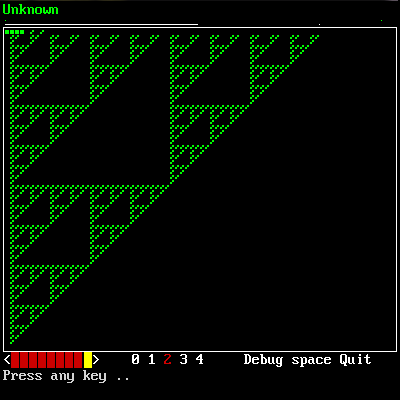The competition takes place in the unexplored area between '94nop and LP settings which has recently been investigated by Fizmo in Redcode Talk.
The exact settings are as follows:
| Standard: | CWS'94 |
| Coresize: | 8000 |
| Processes: | 200 |
| Entry length: | 20 |
| Points win: | 3 |
| Points tie: | 1 |
| Cycles: | 80000 |
| Rounds: | 1000 |
The pMARS command line is
pmars -p 200 -l 20 -r 1000. STP and LDP are forbidden, up to two entries are allowed and battles will take part in a round-robin tournament.For more information, take a look at the announcement in rec.games.corewar.


